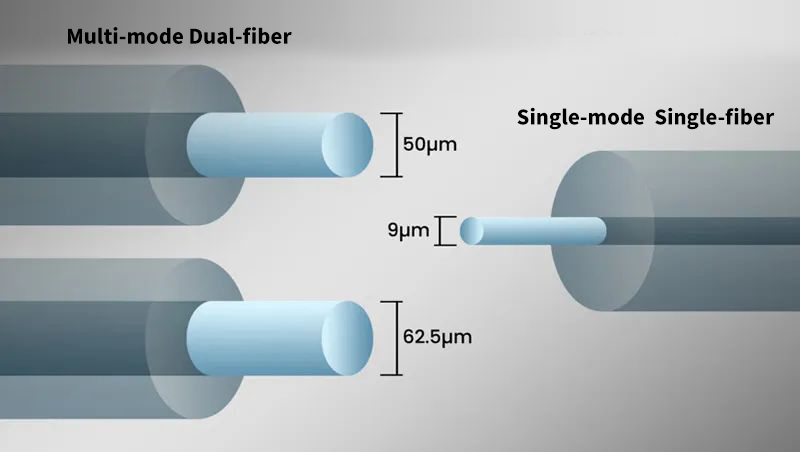Classification by single fiber/multi fiber
Single fiber optical transceiver:
Single fiber optical transceiver is a special type of optical transceiver that only requires one fiber to achieve bidirectional optical signal transmission. This means that a single fiber optic is used for both sending and receiving signals, achieving bidirectional transmission of signals by using different wavelength or time division techniques. Single fiber fiber optic transceivers can save on the use of optical fibers in fiber optic communication, and are suitable for some application scenarios that need to save fiber resources.
Multi fiber optical transceiver:
Multi fiber optical transceiver is a traditional type of optical transceiver that requires at least two fibers to achieve bidirectional optical signal transmission. One fiber optic is used for sending signals, and the other fiber optic is used for receiving signals. Multi fiber fiber transceivers require more fiber resources in fiber optic communication, but they can also provide more stable and independent bidirectional transmission channels, suitable for application scenarios with stricter signal transmission requirements.
If it is necessary to save fiber resources and do not require very high transmission performance, a single fiber optical transceiver can be considered. If a more stable and independent bidirectional transmission channel is required and has higher requirements for signal transmission, then multi fiber optical fiber transceivers can be chosen
Classification by applicable fiber type
Single mode fiber optic transceiver:
Single mode fiber optic transceivers are suitable for single mode fiber optic communication systems. Single mode fiber is a type of fiber with a smaller inner core diameter of 5-10 microns (usually 9 microns), which can transmit higher frequency optical signals. Therefore, it is suitable for long-distance transmission and high-speed data transmission. Single mode fiber optic transceivers typically use lasers as emission light sources, which can achieve longer transmission distances and higher transmission rates. This makes single-mode fiber optic transceivers widely used in scenarios that require long-distance transmission such as metropolitan area networks (MANs) and wide area networks (WANs).
Multimode fiber optic transceiver:
Multimode fiber optic transceivers are suitable for multimode fiber optic communication systems. The inner core diameter of multimode fiber is usually large (usually 50 or 62.5 microns) and can support multiple modes of optical signal transmission. So multimode fiber transceivers cannot be directly connected using single-mode fiber. Multimode fiber optic transceivers typically use light-emitting diodes (LEDs) as emission light sources, suitable for short distance transmission and low-speed data transmission. This makes multimode fiber optic transceivers widely used in short distance applications such as local area networks (LANs) and data center interconnections.
Post time: Sep-21-2023


